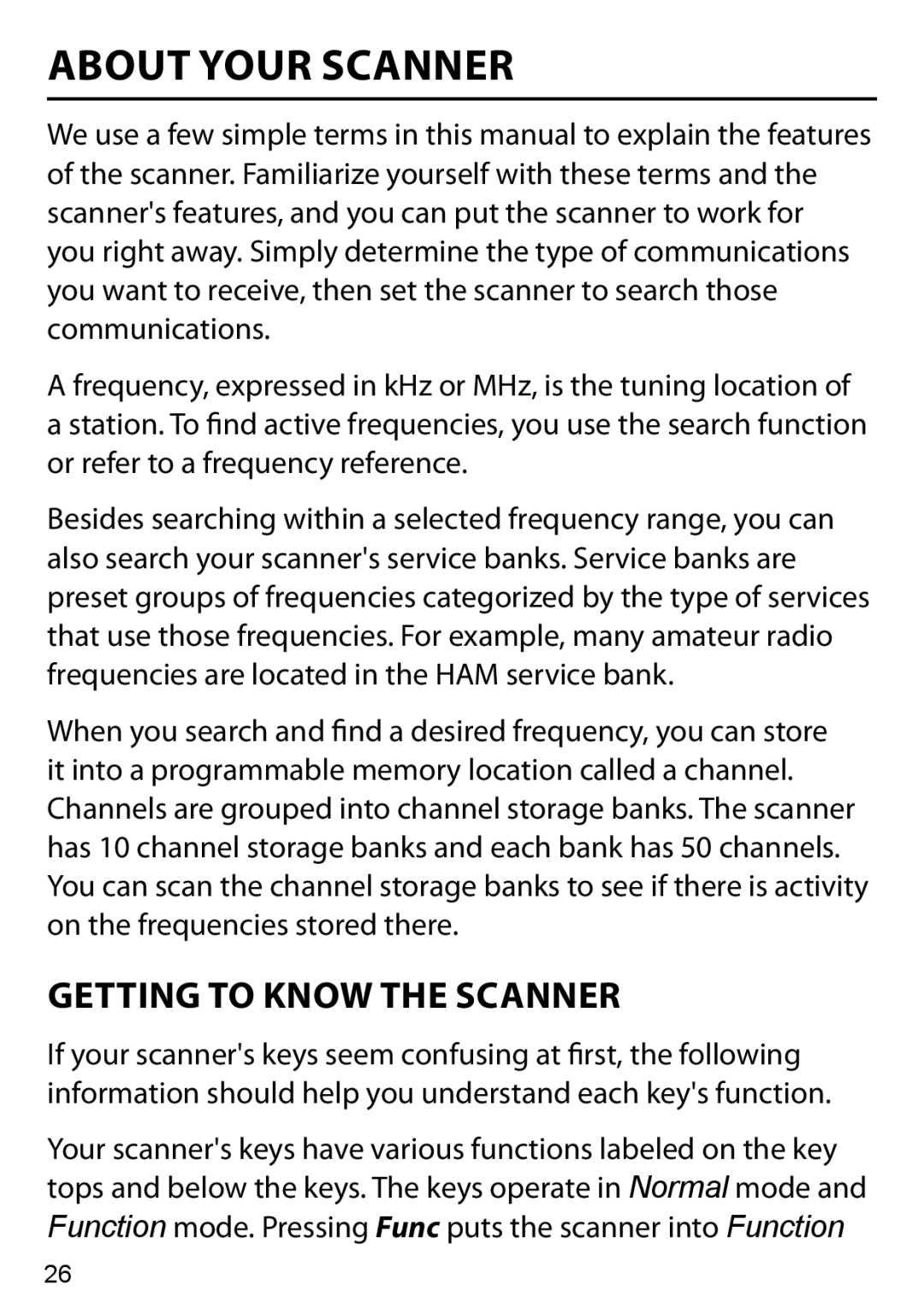ABOUT YOUR SCANNER
We use a few simple terms in this manual to explain the features of the scanner. Familiarize yourself with these terms and the scanner's features, and you can put the scanner to work for you right away. Simply determine the type of communications you want to receive, then set the scanner to search those communications.
A frequency, expressed in kHz or MHz, is the tuning location of a station. To find active frequencies, you use the search function or refer to a frequency reference.
Besides searching within a selected frequency range, you can also search your scanner's service banks. Service banks are preset groups of frequencies categorized by the type of services that use those frequencies. For example, many amateur radio frequencies are located in the HAM service bank.
When you search and find a desired frequency, you can store it into a programmable memory location called a channel. Channels are grouped into channel storage banks. The scanner has 10 channel storage banks and each bank has 50 channels. You can scan the channel storage banks to see if there is activity on the frequencies stored there.
GETTING TO KNOW THE SCANNER
If your scanner's keys seem confusing at first, the following information should help you understand each key's function.
Your scanner's keys have various functions labeled on the key tops and below the keys. The keys operate in Normal mode and Function mode. Pressing Func puts the scanner into Function
26
